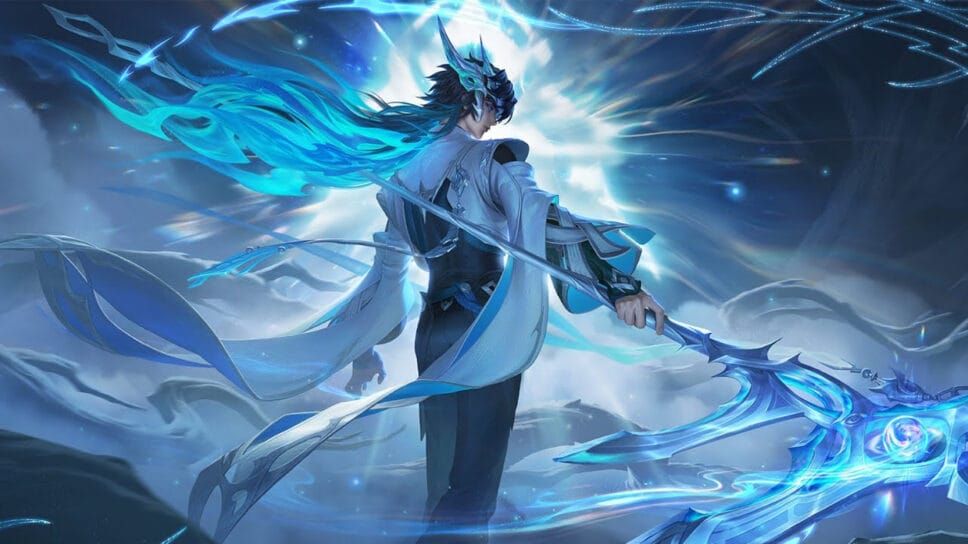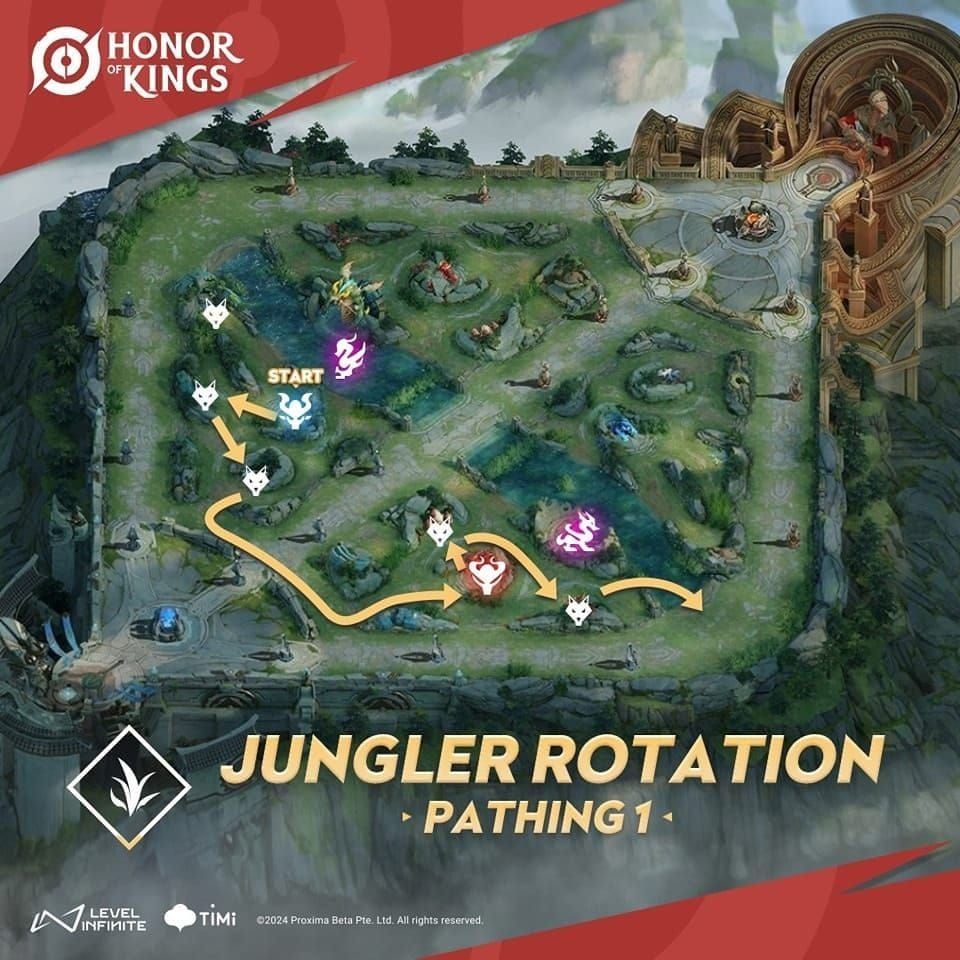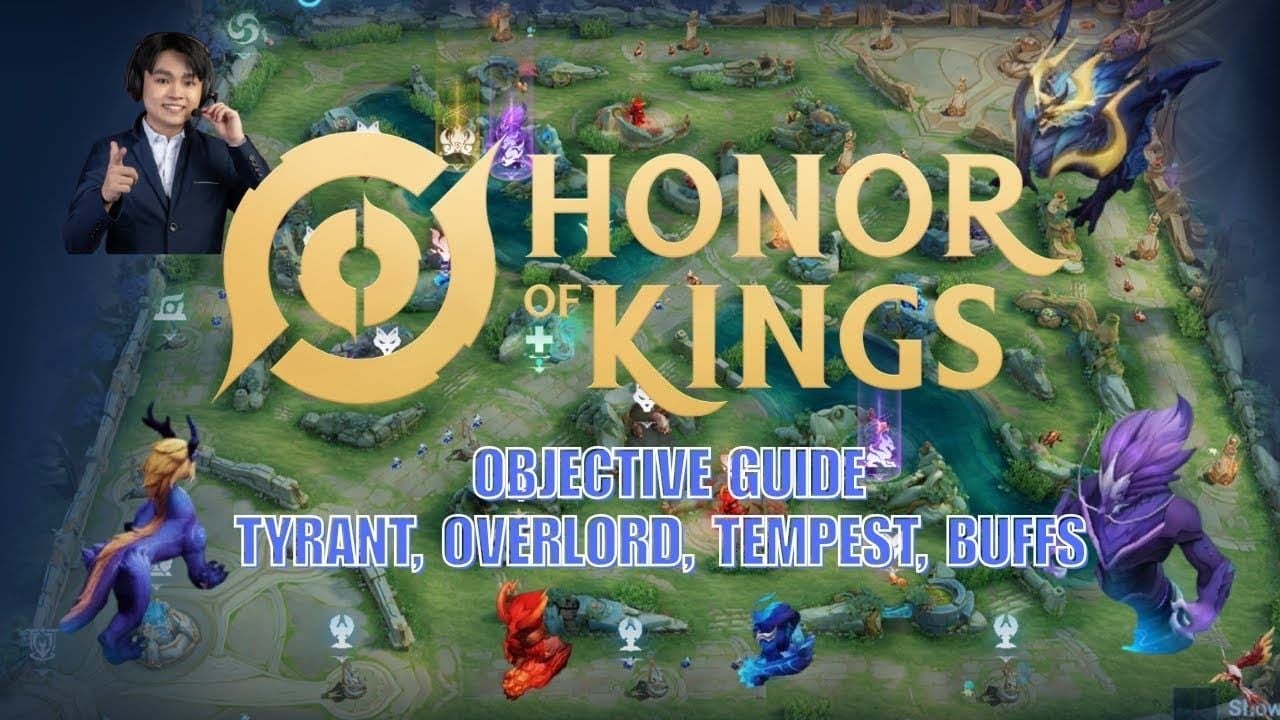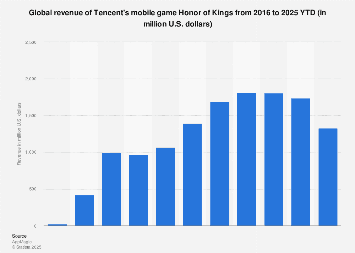Look, I've been covering mobile MOBAs for years, and Honor of Kings' ranking system can be brutal if you don't know what you're doing. This guide cuts through the fluff to give you the real strategies that work in 2025 – from understanding the new performance metrics to mastering the mental game that separates climbers from the perpetually stuck.
Understanding Honor of Kings Ranking System 2025
Here's the thing about the November 15, 2025 Plus Update – it completely changed how climbing works. The new performance-based matchmaking isn't just marketing speak; it actually rewards individual skill across every tier from Iron to Legendary. What does this mean for you? Well, you can finally gain stars even when your team throws, provided you're hitting those high grades.
The system now tracks your recent performance metrics to create what Tencent calls fairer solo queue experiences. Translation: if you're genuinely skilled, you'll climb faster than ever before.

Rank Tiers and Divisions
Bronze and Silver keep it simple – 3 sub-tiers with 3 stars each. But here's where it gets interesting: Gold and Platinum bump up to 4 sub-tiers requiring 4 stars per division. Diamond and Master? They're the real grind with 5 sub-tiers needing 5 stars each.
Grandmaster operates differently (because of course it does). It's all star-based: 25 stars for Mythic, 50 for Epic, and a whopping 100 for Legend status.
Quick math check: you need roughly 100 net stars to go from Bronze to Grandmaster. Seasons last 3 months, and most players are looking at 200-300 games for the full climb. Skilled players with consistent 60%+ win rates? They can hit Diamond in 40-100 matches.
For players serious about climbing, honor of kings daily deals tokens top up through BitTopup offers competitive pricing and instant delivery. Having the right champions unlocked and confidence-boosting skins can genuinely impact your ranked performance – I've seen it happen countless times.
Star Point Mechanics
This is where things get technical, but stick with me. The performance-based grading runs from C to SSS, and it's not just about your KDA. The algorithm considers kill participation, objective control, and damage contribution.
Want that coveted SSS grade? You need:
70-80% kill participation
KDA of 6.0 or higher
3+ objective takedowns
Top-2 damage dealing (25-30% of total team damage)
Star progression follows predictable patterns:
Win + SSS grade = +2 or +3 stars (jackpot!)
Win + lower grade = +1 star
Loss + SSS grade = +1 star (this is huge)
Loss + lower grade = -1 star (protected by Bravery Points)
Bravery Points: Your Safety Net
Bravery Points are your best friend in ranked. You earn 3-5 per match, with bonus accumulation during win streaks that actually matter. Two-game streaks give you 6 points, three-game streaks provide 10, and four-plus streaks grant 16 points.
Here's a pro tip most guides won't tell you: Gold medal performances in Diamond+ matches award 50 Bravery Points. That's significant protection right there.
Season Reset Changes
Grandmaster players with 0-9 stars reset to Diamond II – ouch. Diamond I players drop to Diamond V, which honestly feels more reasonable. The matchmaking algorithm now considers hero performance, role-specific skills, and win trends over your most recent 20 games. It's creating more balanced matches based on current skill rather than that embarrassing losing streak from two months ago.
Essential Solo Queue Climbing Strategies
Solo queue is a different beast entirely. You can't rely on coordinated team plays or voice chat – it's all about self-sufficiency and smart adaptation. After analyzing hundreds of climbing accounts, here's what actually works.
Champion Pool Optimization
This might be controversial, but I'm saying it anyway: stop trying to master every champion. Focus on 2-3 S-tier or A-tier heroes per role. That's it.
For Diamond and below, stick with straightforward champions like Arthur, Augran, Daji, Marco Polo, and Yaria. These offer high impact without requiring frame-perfect combos. Master+ players can expand to mechanically demanding champions like Lam, Loong, Charlotte, Yixing, and Dyadia – but only after proving they can execute consistently.
Track your personal win rates religiously. I've seen too many players stick with fun champions that have terrible win rates for their playstyle.
Role Selection Priority
Jungle and Mid Lane offer the highest carry potential – this isn't opinion, it's data. Jungle champions like Lam and Augran can secure early advantages through efficient clearing and those crucial level 2 ganks. Mid lane mages like Daji provide the burst damage and crowd control that wins team fights.
Marksman players should focus on scaling champions like Loong and Marco Polo that can legitimately take over games in the late phase. Support players (respect to you all) can climb effectively with high-impact champions like Yaria and Da Qiao.
Game State Assessment
Here's where experience really shows. You need to recognize win conditions and adapt accordingly. Early game compositions should be aggressive – secure advantages through ganks and skirmishes. Late game compositions? Survive the laning phase and scale toward team fights.
Monitor enemy cooldowns constantly. Track ultimate abilities. Check that minimap every few seconds – I can't stress this enough.
Meta Heroes and Tier List Analysis
The November 2025 meta emphasizes mobility, sustain, and team utility. This comes straight from professional tournament data and recent patch adjustments. S-tier heroes are achieving 52-55% win rates with 98% pick/ban rates in pro play.
Top Tier Champions by Role
S-Tier Tanks: Arthur leads with a solid 54.2% win rate and 18.5% pick rate. His area denial and damage amplification through crowd control abilities make him incredibly reliable. Dun offers exceptional survivability for protecting hypercarry compositions – 33.3% professional pick rate speaks volumes.

S-Tier Fighters: Augran is absolutely dominating with 55.1% win rate and 45.2% ban rate. He functions as a hybrid tank with self-healing passives and mobility dashes. Build path focuses on Resistance Boots, Dominance Ice, Shield of the Lost, and Twilight Armor for maximum durability.
S-Tier Mages: Daji maintains 54.7% win rate through one-shot burst potential (and honestly, it's satisfying to watch). Yixing provides 52.8% win rate with superior zone control when building cooldown reduction and magic power items. Angela offers 53.3% win rate with versatile utility and that game-changing global ultimate.
S-Tier Assassins: Lam achieves 54.9% win rate with 24.1% pick rate and 38.7% ban rate. Fastest jungle clear in the game plus level 2 gank potential? No wonder everyone bans him. His combo sequence involves Wavebreaker for 30% cooldown reduction, Space Split marks for dash attacks, and Death From Below ultimate.
S-Tier Marksmen: Loong leads with 55.3% win rate and 26.8% pick rate. Infinite Vastness provides 4.5-second flight duration and late-game scaling that's genuinely terrifying. Marco Polo provides 53.6% win rate through Chain Reaction passive delivering true damage at 10 stacks.
S-Tier Supports: Yaria achieves 53.8% win rate with crowd control, healing, and Verdant Predator ultimate providing true damage shields. Da Qiao offers portal positioning and global teleportation for superior map control.
Ban Phase Strategy
Priority bans should target Augran (45.2% ban rate), Lam (98% pick/ban rate), and Daji (91% ban rate). These numbers don't lie – their impact on game outcomes is overwhelming.
First rotation picks should secure Lam or Augran for carry and flex potential, followed by Loong or Marco Polo for scaling power. The Rush Down composition featuring Charlotte, Lam, Daji, Marco Polo, and Yaria achieves 68% tournament win rate through aggressive early game pressure.
Early Game Domination Techniques
The first 5 minutes determine everything. I've analyzed thousands of matches, and proper laning fundamentals, jungle optimization, and first blood opportunities create snowball advantages that translate directly into wins.
Laning Phase Fundamentals
Focus on precise last-hitting for that crucial 50% gold bonus while maintaining safe positioning. Achieve 6-7 creep score per minute in Gold+ ranks through efficient wave management and jungle camp utilization. Mid lane players should clear waves efficiently and rotate to assist side lanes during enemy recalls.
Jungle Pathing
Optimal jungle clearing begins with Red Buff at 00:30-00:45, followed by Blue Buff at 01:00. This creates opportunities for level 2 ganks between 01:00-01:30 with 67% success rates – those are excellent odds. Lam's jungle combo maximizes clear speed through Wavebreaker's cooldown reduction and health restoration.

Counter-jungling becomes viable when enemy positions are tracked through vision control. Risk versus reward calculation here.
First Blood Opportunities
Level 2 power spikes create the strongest early game kill potential, particularly for champions like Lam who gain significant ability combinations. Honor of kings vip recharge service from BitTopup ensures you have access to premium champions and skins that can provide psychological advantages during crucial early game encounters. Fast delivery and competitive pricing make it worth considering for serious climbers.
Ward placement in river brushes and jungle entrances prevents enemy ganks while providing information for counter-attacks.
Mid Game Transition and Objective Control
The 5-12 minute window? This is where games are won or lost. Proper objective timing, team fight preparation, and tower pushing strategies separate climbers from players stuck in lower ranks.
Tower Pushing Strategy
Group for coordinated pushes after securing core items and level advantages. Use super minions from destroyed inhibitor towers to create sustained pressure while your team focuses on other objectives.
Wave management becomes crucial during mid game transitions. Freeze waves when ahead to deny enemy farm, or push waves before roaming to minimize minion loss.
Dragon and Turtle Timing
Tyrant and Overlord spawn at 4:00, providing 71 gold per player and 34 gold respectively. Shadow spawns at 10:00 with significantly higher rewards of 136/58 gold and 3:30 respawn timer. Tempest Dragon appears at 20:00 with powerful buffs including 5% true damage that can decide late game team fights.

Coordinate team rotations 55 seconds before spawn times to secure optimal positioning and vision control.
Team Fight Preparation
Establish vision control in jungle areas and river brushes before contesting objectives. Formation strategies depend on team composition: frontline protection for standard comps, hypercarry protection for scaling compositions, and split push pressure for mobile champions.
Track enemy ultimate cooldowns and plan team fights around key ability windows for maximum success probability.
Late Game Execution and Closing
Games extending beyond 12 minutes require precise execution. Late game scaling, high ground sieges, and game-ending plays determine the outcome of closely contested matches.
Team Composition Scaling
Hypercarry compositions featuring Dun, Angela, Loong, Lam, and Dolia excel in extended games through superior scaling and team fight potential. Protect formations prioritize carry safety through multiple layers of crowd control and healing.
Split push strategies utilize mobile champions to create pressure on multiple fronts, forcing enemies to choose between defending against the split pusher or contesting objectives.
High Ground Siege
Approach high ground sieges with patience and proper vision control. Use poke damage and wave clear to gradually wear down enemy defenses while maintaining safe positioning. Coordinate with super minions to create sustained pressure that forces enemy responses.
Utilize Tempest Dragon buffs for enhanced siege potential through increased damage and utility effects.
Game-Ending Plays
Avoid unnecessary deaths during late game phases – death timers exceed 60 seconds and can result in immediate game losses. Stick together for team fights rather than attempting individual plays that risk throwing away accumulated advantages.
End games quickly after securing major advantages like team fight victories or Baron buffs.
Mental Game and Tilt Management
Here's something most guides won't tell you: psychological resilience determines climbing success more than mechanical skill or game knowledge. I've seen mechanically gifted players stuck in Gold because they can't handle tilt.
Maintaining Focus
Check the minimap every few seconds to maintain constant awareness of enemy positions and potential threats. Mute toxic players immediately – preserve that mental energy for strategic decision-making. Use Bravery Points strategically for star protection during promotion matches and important games.
Comeback Mindset
Focus on objectives and macro play rather than KDA statistics when behind in games. Many solo queue matches are decided by late game team fights and objective control rather than early game kill advantages.
Learn from losses without frustration by identifying specific mistakes and improvement opportunities.
When to Take Breaks
Take breaks after three consecutive losses to prevent tilt from affecting decision-making and performance. Extended losing streaks often result from emotional decision-making rather than skill deficits.
Use Tier Double Star Cards after breaks to maximize climbing efficiency during fresh mental states.
Performance Tracking and Improvement
Systematic performance analysis accelerates climbing progress by identifying specific areas for improvement and tracking progress over time.
Key Metrics to Monitor
Track KDA ratios ≥6.0, kill participation rates of 70-80%, and objective control statistics including 3+ objective takedowns per game. Monitor damage contribution percentages, aiming for 25-30% of total team damage for carry roles.

Maintain win rate statistics above 60% for efficient climbing.
Replay Analysis
Dedicate equal time to replay analysis as active gameplay for maximum improvement efficiency. Professional players often spend 30-50% more time studying replays than playing.
Focus on positioning errors, missed opportunities, and decision-making processes during replay review.
Goal Setting Framework
Set specific, measurable goals like reaching Diamond rank within 3 months or achieving 65% win rate on main champions. Track progress through detailed statistics and performance metrics rather than relying on subjective feelings.
Most players require 200-300 games to reach Diamond from Bronze.
Common Climbing Mistakes to Avoid
Recognizing and eliminating common errors accelerates climbing progress by preventing self-inflicted setbacks that keep players stuck in lower ranks.
Overextending Errors
Avoid chasing enemies too far without vision control or team support. This frequently results in deaths that provide enemy teams with gold and map control advantages. Resist the temptation to make individual plays when team coordination would be more effective.
Stop pushing lanes without adequate vision coverage.
Poor Champion Selection
Avoid playing too many different champions – mastery of 2-3 heroes per role yields better results than mediocre performance across a large champion pool. Don't pick mechanically complex champions like Ling or Shangguan Wan'er in lower ranks where simpler champions provide more consistent results.
Balance team damage types, crowd control, and scaling patterns.
Neglecting Vision Control
Place wards consistently in river areas, jungle entrances, and objective zones to prevent ganks and enable counter-attacks. Destroy enemy wards when safe to do so – this denies enemy information while creating opportunities for ganks.
Use Teleport Flowers strategically for map mobility while destroying enemy flowers to limit their rotation potential.
FAQ
How does the Honor of Kings ranking system work in 2025? The 2025 system uses performance-based matchmaking with grades C-SSS that affect star gains. SSS grades require 70-80% kill participation, 6.0+ KDA, and 3+ objectives. Players gain extra stars for high performance and can earn stars even in losses with SSS grades.
What are the best heroes for solo queue climbing? S-tier picks include Augran (55.1% win rate), Loong (55.3%), Lam (54.9%), Daji (54.7%), and Yaria (53.8%). Focus on 2-3 heroes per role for consistency. Diamond and below should prioritize simple champions like Arthur and Marco Polo.
How long does it take to climb to Diamond? Most players need 200-300 games over 2-3 months with 60%+ win rates. Skilled players can reach Diamond in 40-100 games. Focus on mastering meta heroes, maintaining map awareness, and avoiding common mistakes for faster progression.
When should I focus on objectives vs team fights? Prioritize objectives like Tyrant/Overlord at 4:00 and Shadow at 10:00 for economic advantages. Contest objectives 55 seconds before spawn with proper vision. Late game focuses on Tempest Dragon at 20:00 for game-ending buffs.
How do I avoid tilt and losing streaks? Take breaks after 3 consecutive losses, mute toxic players, and use Bravery Points for star protection. Focus on objectives over KDA and learn from losses through replay analysis. Maintain 60%+ win rates through consistency rather than risky plays.
What's the most important skill for climbing? Map awareness through constant minimap checking prevents ganks and creates opportunities. Combine this with mastering 2-3 S-tier heroes per role and understanding objective timing. Mental resilience and tilt management often matter more than mechanical skill for consistent climbing.

